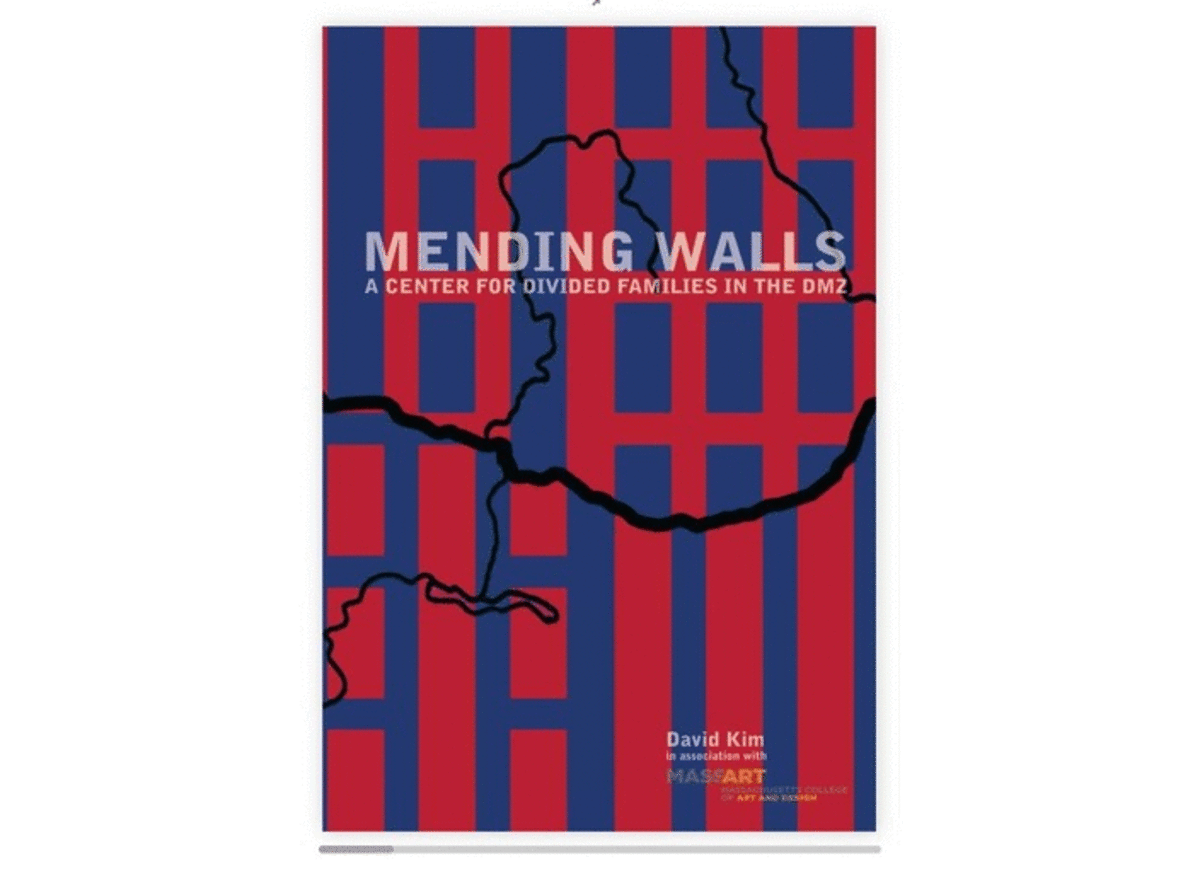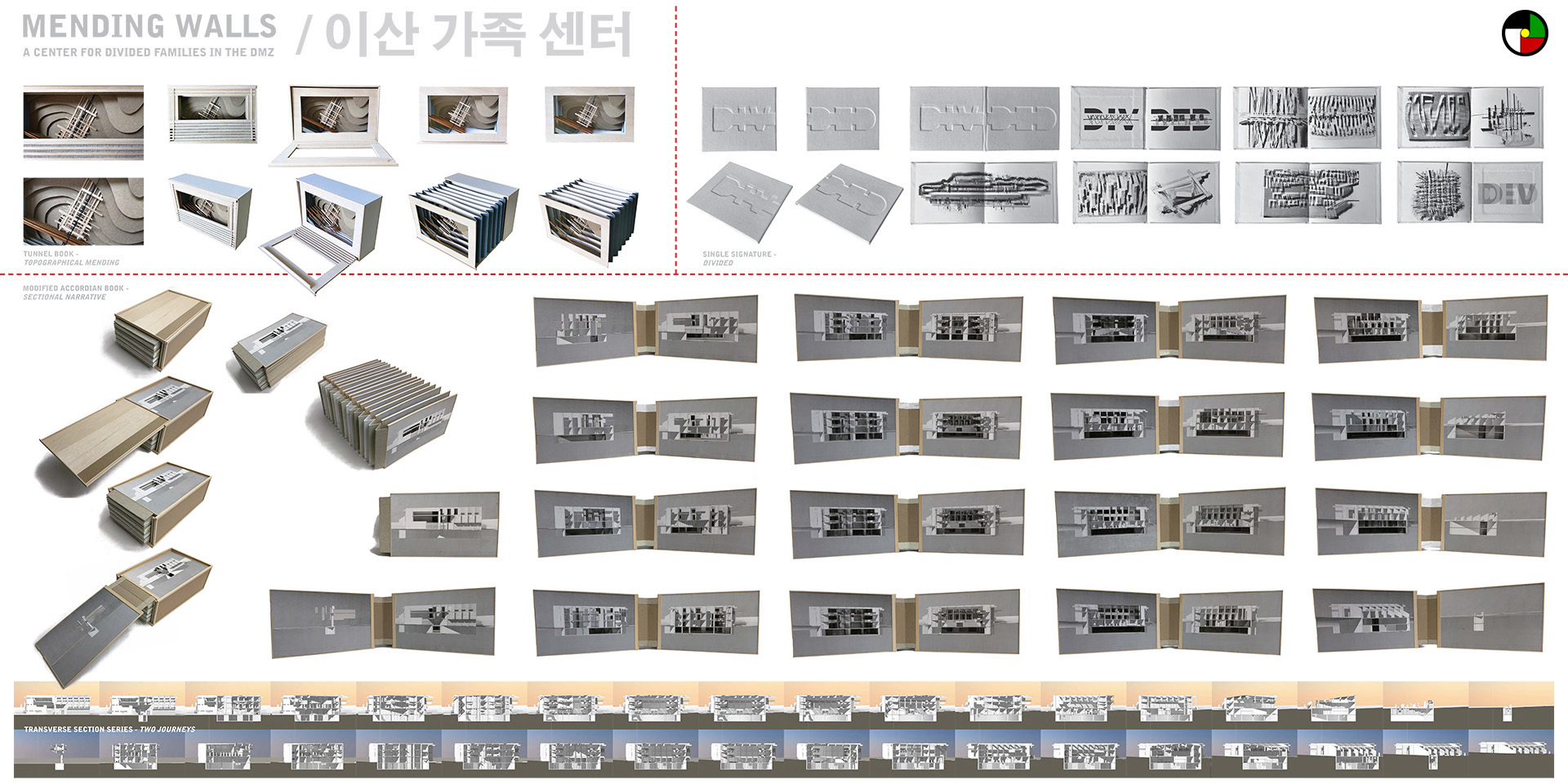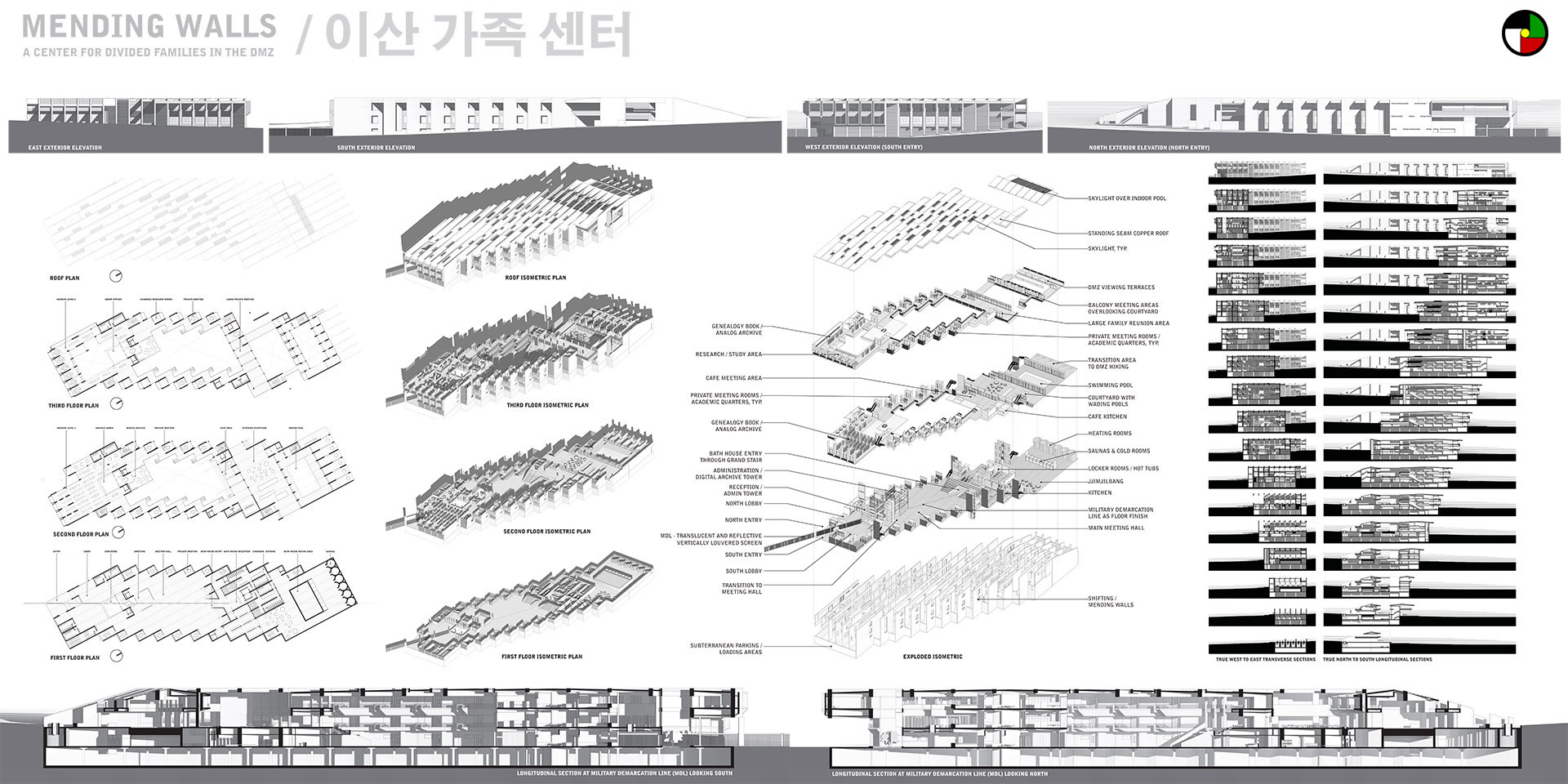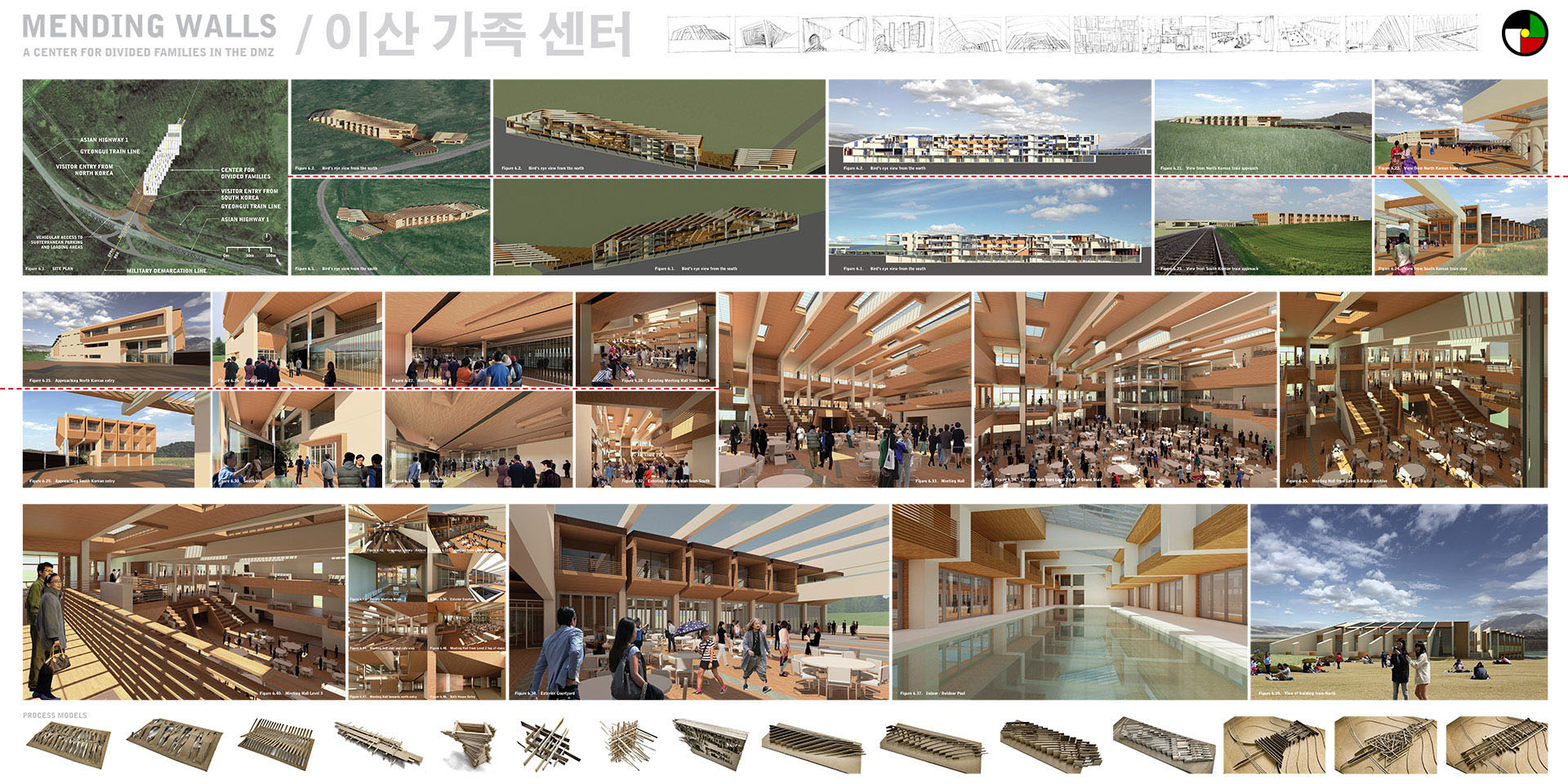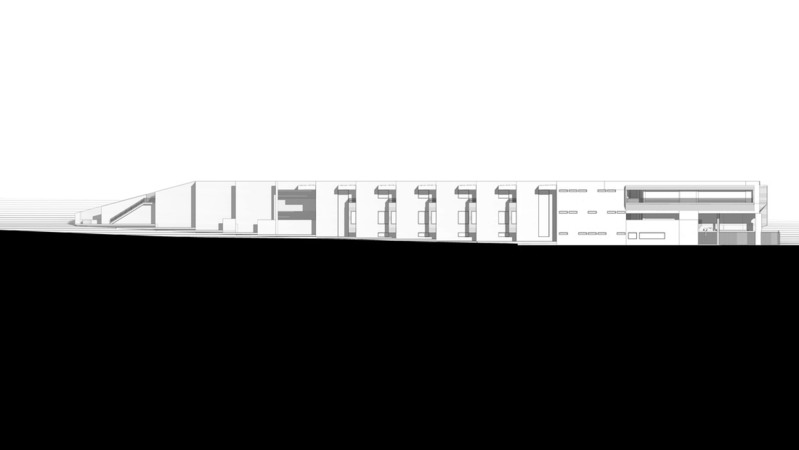Mending Walls
A Center for Divided Families in the DMZ
One of the last vestiges of extreme Cold War tensions is the Demilitarized Zone (DMZ), separating North and South Korea, the creation of which divided millions of family members. Most have not had any contact with each other in over 65 years. This is a proposal for a permanent Center for Divided Families on the Military Demarcation Line (MDL) within the DMZ, which would allow separated family members to reunite across this highly militarized border without having to rely on sporadic, government-sanctioned reunion events. Through architectural explorations of division and unity, and the spectrum of spatial relationships that exist between the two, strategies were formulated in order to create architecture which can facilitate understanding between family members who have endured decades of personal and ideological separation under their respective political and sociological constructs. The idea of the border could be transformed from a hard boundary into a third space that fosters encounters and cultural exchange rather than isolation, through a reunion process which ultimately stresses similarities rather than differences. The architecture in border zones such as the DMZ could represent, both literally and symbolically, the cultural history, characteristics, and aspirations of the societies straddling that border, illustrating plurality while emphasizing unity.

